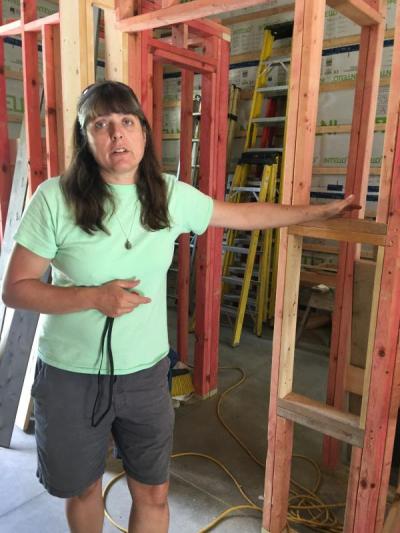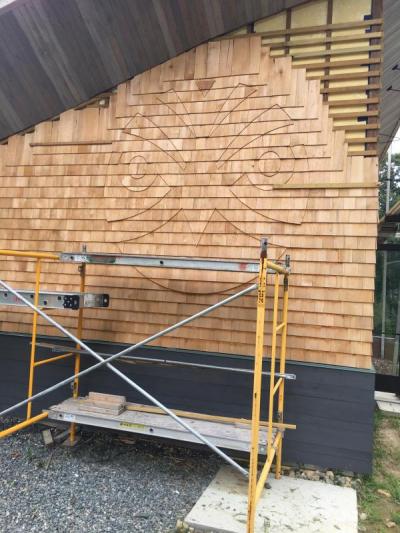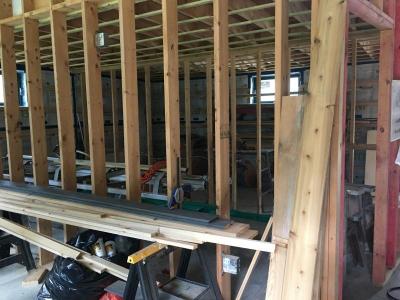‘Little building that could:’ Lloyd Center work continues
Construction continues at the Lloyd Center for the Environment on a new welcome center to accommodate growing numbers of visitors who want to learn about the natural world.
Their education will begin, center officials hope, before they even enter the front door.
The building itself serves as an educational tool, serving as an example of how construction can be done in an environmentally sustainable method, said Rachel Stronach, executive director of the center.
Each step in the building process is being done with the environment in mind, Stronach said. Every decision — from the type of bathrooms to the electricity used to power the structure to the final destination of the water used in the sinks — reflect the center’s devotion to the environment, she said.
“We wanted a building that encapsulates our mission,’’ Stronach said.
The center is working with architect Kathryn Duff, the founder and director of studio2sustain, which works to develop sustainable solutions for buildings.
The work will meet the living building challenge, a certification program of the International Living Future Institute that is the highest level of accreditation for environmentally friendly construction.
To reach this standard, a building must provide “a framework for design, construction and the symbiotic relationship between people and all aspects of the built environment,’’ according to the official definition provided by the institute.
The environment is factored into every phase of construction. “Every single thing here has to be sourced,’’ Stronach said. “We have to justify every single material.’’
All wood used must be sustainably forested, she said, with a tree planted for every tree removed.
The bathrooms feature composting toilets, which do not require sewer or septic tie-ins.
Grey water, which is water from sinks, will ultimately be used to water gardens outside the building.
“Everything is very purposeful,’’ Stronach said, and involves “a lot of thought.’’
Even the placement of the building matters, said Elizabeth Moniz said, education outreach director and property manager at the center. The location was selected and the roof pitch designed to receive the most sunlight, which is then used to generate the building’s electricity.
When the work is completed, the environmental focus continues. Any extra wood will be buried on the site and covered with dirt to create an hospitable growing environment for plants based on the German practice of hügelkultur, which claims that this technique helps to improve soil fertility and water retention.
“We can’t just put a box up,’’ Moniz said.
The educational theme extends to the construction process itself, she said. Construction crews made up of students from Greater New Bedford Regional Vocational-Technical High School have been working on the structure.
That process has been a challenge, Stronach said, further affected by what Moniz described as a “series of unfortunate events.’’
Center staff was faced with delays driven by Covid, including its impact on the schedules of the students and health issues faced by one of the instructors. Only certain qualified instructors can work on the project with the students.
All of this has resulted in a building that continues to be worked on deliberately, piece by piece. Work began in 2017 and Stronach is hesitant to deliver an end date, although she will say “ideally in 18 months’’ the project will be completed.
But things are chugging along, Moniz said.
“It’s the little building that could,’’ Moniz said. “We need to push this across the finish line.’’
















